श्री हरये नमः । Shri Haraye Namaha.
This article shall provide an outlook and overview of the Vaishnava philosophy, or the Vaishnava Mata (वैष्णव मत), as well as its history and mention in the Shaastras. Vaishnavism is the philosophy of Hinduism which considers Shri Vishnu as the Supreme Being or Para Brahma.
There are several Vaishnava philosophies today, with their own disciplic successions and philosophical tenets, known as ‘sampradaayas’. There is even a myth believed by some, that the Vaishnava philosophy is developed during recent centuries and did not exist before the time of Shri Ramanujacharya. However, this is quite baseless.
All present day Vaishnava sampradaayas follow either the Pancharaatra or Vaikhaanasa philosophies. These are two ancient systems of Vaishnavism, with their philsoophical texts called ‘Aagamas’, which describe their philsoophical tenets and rituals such as temple worship. These philosophies have been in practice since thousands of years and are even mentioned several times in the other Shaastras, including the Vedas, Mahaabhaarata and Puraanas.
Vaikhaanasa was founded by Maharshi Vikhaanasa, an amsha of Shri Brahmaa. Pancharaatra was founded by Shri Naaraayana Rshi, an avataara of Shri Vishnu Himself. He provided the knowledge of the Pancharaatra doctrine to many Rshis, who transferred its knowledge through the Pancharaatra Aagamas. Most of the present day Vaishnava sampradaayas are the followers of the same Pancharaatra philosophy and are descendants of these Rshis through disciplic succession.
The Vaikhaanasa Aagamas are mentioned directly in the Vedas. For instance, the Taandya Maha-Braahmana of the Saama Veda says:
वैखानसं भवति ।
Saama Veda (Raanaayaneeya Shaakha), Taandya Mahaabraahmana, Praapathaka 14, Khanda 4, Mantras 6-7
वैखानसा वा ऋषय इन्द्रस्य प्रिया आसँ ॥
The Vaikhaanasa Aagamas mainly consists of Veda mantras and are linked to the Vaikhaanasa Shaakha (branch) of the Krshna-Yajurveda. Currently, only the Paramaatmika Upanishad is an extant text belonging to this Shaakha. It has been commented upon by the Vaikhaanasa philosopher, Shri Shreenivaasa Deekshita.
The Pancharaatra philosophy, on the other hand, is derived from the Vaidheya Shaakha, or Ekaayana Shaakha of the Shukla-Yajurveda (a currently lost branch of the Yajurveda). Therefore, it is sometimes even known by the name ‘Ekaayana’.
The Pancharaatra Philosophy
The Vaishnava philosophy considers Bhagavaan Naaraayana alone to be Param Brahman. He is solely eternal and is the creator, sustainer and annihilator of all the realms and the universe. All other entities are jeevas, living entities, who are eternally subordinate to Him and dependent on Him for their existence. The highest abode or destination for all living entities is Parama Padam, Vaikuntha. Vaishnavism considers Brahman to possess a divine and inconceivable form. The Pancharaatra Aagamas describe five levels of manifestations of Shri Vishnu:
- Para: Literally meaning “the Highest” or “Supreme”, this refers to Para Vaasudeva, the highest form of Shri Vishnu. He resides at ‘Paramapadam’ (literally meaning “the Highest/Supreme abode”). He is the Mula-Rupa or root form of Vishnu.
- Vyuha: They are four forms acquired by Shri Vishnu, which are His manifestations in our material universe, known as ‘Vyuhas’. He acquired these forms when He creates the universe.
- Vaasudeva: The first Vyuha form, who resides at the Ksheera-Saagara and is visible to the devatas.
- Sankarshana: The Vyuha form who is the presiding devata of tamas. He is also the originator of Shri Aadi Shesha and Shri Shiva.
- Pradyumna: He is the third Vyuha form, who performs preservation.
- Aniruddha: He is the form of Shri Vishnu among the Trimurtis (Brahmaa, Vishnu and Shiva). Shri Brahmaa originates from a lotus on His navel.
- Vibhaava: The various avataaras of Shri Vishnu, who appear from the Aniruddha Vyuha form. He descends in our material realms, the Lokas, in various forms. All the saakshaat avataaras of Vishnu are the same Personality as Himself and are completely equivalent to Him in all aspects.
- Antaryaami: The form of Shri Vishnu, being present within the soul of all beings, as Paramaatma, the Indweller within all beings.
- Archa: The energized deity in a temple, which is used as a means of worshiping Shri Vishnu.
The Pancharaatra Aagamas enable the worship of Bhagavaan Naaraayana through several mediums, such as water, fire, in a temple deity or even as one’s own Antaryaami. The objective of the Pancharaatra philosophy is to provide moksha to all Vaishnavas, regardless of background, varna, sex, race, and all factors. So, the Mahaabhaarata says:
पञ्चरात्रविदो मुख्या यथाक्रमपरा नृप ।
Mahaabhaarata, Shaanti Parva, Adhyaaya 359, Shloka 72 (var. Adhyaaya 337, Shloka 67)
एकान्तभावोपगता वासुदेवं विशन्ति ते ॥
“Those eminent ones who comprehend the Pancharaatra philosophy and through understanding the relative position of the Devas, thereby attain single-minded devotion, enter into Vaasudeva (i.e., obtain moksha).”
This shloka has been quoted by Shripaada Madhvacharya, in the Mahaabhaarata Taatparya Nirnaya, Adhyaaya 2, Shloka 110.
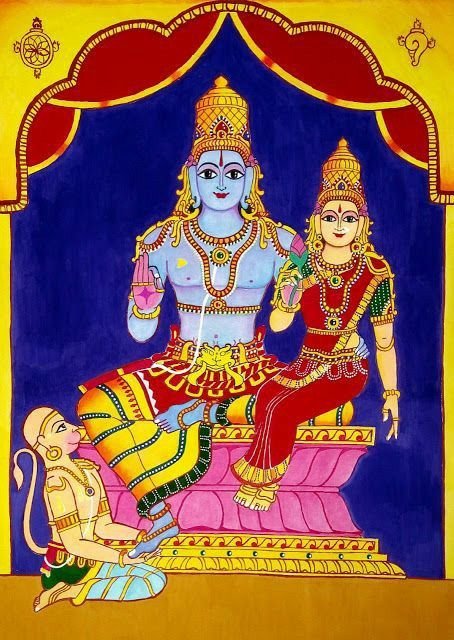
The Shaastras provide the following description of Para Vaasudeva, as quoted by Shri Madhvacharya, in the Mahaabhaarata Taatparyya Nirnnaya, Adhyaaya 21.
ददर्श तद्भोगसुखासनं विभुं महानुभावं पुरुषोत्तमोत्तमम् ।
सान्द्राम्बुदाभं सुपिशङ्गवाससं प्रसन्नवक्त्रं रुचिरायतेक्षणम् ॥ ५४ ॥महामणिव्रातकिरीटकुण्डलप्रभापरिक्षिप्तसहस्रकुन्तलम् ।
प्रलम्बचार्वष्टभुजं सकौस्तुभं श्रीवत्सलक्ष्मं वनमालया वृतम् ॥ ५५ ॥सुनन्दनन्दप्रमुखै: स्वपार्षदैश्चक्रादिभिर्मूर्तिधरैर्निजायुधै: ।
Bhaagavata Puraana, Skandha 10, Adhyaaya 86, Shlokas 54-56
पुष्ट्या श्रिया कीर्त्यजयाखिलर्धिभिर्निषेव्यमानं परमेष्ठिनां पतिम् ॥ ५६ ॥
“He (Arjuna) saw seated happily on that mighty serpent (Aadi Shesha), the Almighty Purushottama. Resembling a dark cloud, He had a beatiful yellow garment, a pleased face, with attractive and broad eyes. He had a crown and ear rings with several great bright gems and several scattered locks of hair, with eight long beautiful arms, the Kaustubha mani, the Shreevatsa mark and embraced by a garland of forest flowers. He was served by Sundanda and Nanda prominently, by His associates such as the Sudarshana chakra and the others, with His weapons having adorned their true form. The Master of all rulers was being served distinctly by Pushti, Shri, Keerti and Ajaa.”

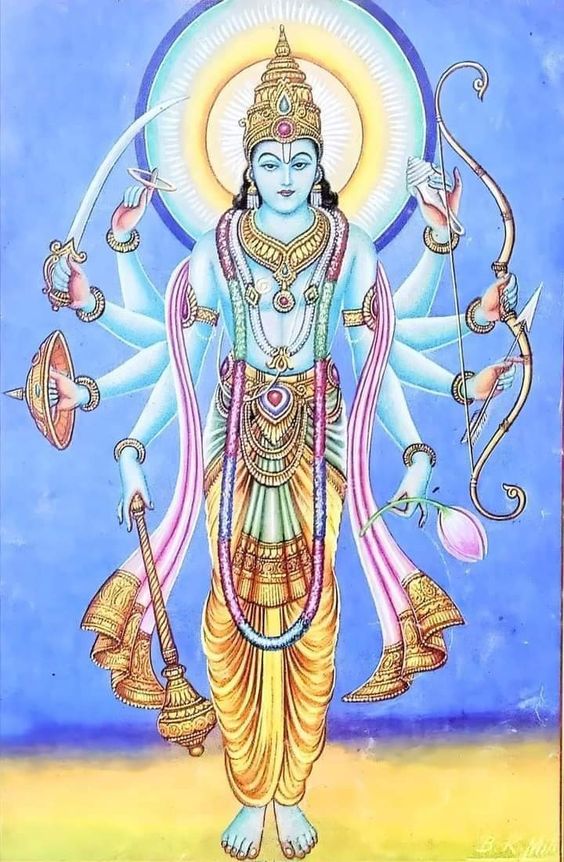
Mentions of the Vaishnava Siddhaanta in the Shaastras
There are many pramaanas from the Shaastras describing and glorifying the Pancharaatra philosophy. In the Chhaandogya Upanishad, Devarshi Naarada mentions it as one of the Shaastras he knows.
ऋग्वेदं भगवोऽध्येमि यजुर्वेदं सामवेदमाथर्वणं चतुर्थमितिहासपुराणं पञ्चमं वेदानां वेदं पित्र्यं राशिं दैवं निधिं वाकोवाक्यमेकायनं देवविद्यां ब्रह्मविद्यां भूतविद्यां क्षत्रविद्यां नक्षत्रविद्यां सर्पदेवजनविद्यामेतद्भगवोऽध्येमि ॥ ७.१.२ ॥
Chhaandogya Upanishad, Prapaathaka 7, Khanda 1, Mantra 2
This mantra refers to Pancharaatra by the name ‘Ekaayana’. The context of Devarshi Naarada learning about the Vaishnava philosophy can be found In the Varaaha Puraana, where he performs Tapas to propitiate Bhagavaan Vishnu, after which Varaaha appears and says that the Pancharaatra Aagamas have been revealed by Him, and are the highest means to reach Him.
दिदं पञ्चरात्रं मे शास्त्रं परमदुर्लभम् ।
तद्भवान् वेत्स्यते सर्वं मत्प्रसादान्न संशयः ॥वेदैश्च पञ्चरात्रैश्च भक्त्या यज्ञैस्तथैव च ।
Varaaha Puraana, Adhyaaya 66, Shlokas 17 and 18
दृश्योऽहं नान्यथा दृश्यो वर्षकोटिशतैरपि ॥
(Shri Varaaha said): “You will know that this Pancharaatra Shaastra belongs to Me, in its entirety, which is the highest means and easy to follow, through My grace. There is no doubt about this. I am to be seen through the Vedas, the Pancharaatra Aagamas, bhakti and yajnas, not by any other means, even in crores of years.”
The 18th shloka of this Adhyaaya, has been quoted by Shripaada Madhvacharya, in his Mundaka Upanishad bhaashya, Mundaka 1, Khanda 1, Mantra 5.
पुरुषो ह नारायणोऽकामयत अतितिष्ठेयं सर्वाणि भूतान्यहमेवेदं सर्वं स्यामिति स एतम् पुरुषमेधम् पञ्चरात्रम् यज्ञक्रतुमपश्यत्तमाहरत्तेनायजत तेनेष्ट्वात्यतिष्ठत्सर्वाणि भूतानीदं सर्वमभवदतितिष्ठति सर्वाणि भूतानीदं सर्वम् भवति य एवम् विद्वान्पुरुषमेधेन यजते यो वैतदेवम् वेद ।
Shatapatha Braahmana, Khanda 13, Adhyaaya 6,
Braahmana 1, Mantra 1
The aforementioned mantra refers to the Yajna of five-nights performed by Shri Brahmaa, to procure the knowledge of the Pancharaatra philosophy. This has an Upabrhmana in the Mahaabhaarata, where Brahmaa Deva receives the knowledge of the Pancharaatra Siddhaanta from Shri Vishnu, while commencing the creation of the material world.
धर्मं च मत्तो गृह्णीष्व सात्वतं नाम नामतः ।
तेन सृष्टं कृतयुगं स्थापयस्व यथाविधि ॥ततो ब्रह्मा नमश्चक्रे देवाय हरिमेधसे ।
धर्मं चाग्र्यं स जग्राह सरहस्यं ससंग्रहम् ॥आरण्यकेन सहितं नारायणमुखोद्गतम् ।
उपदिश्य ततो धर्मं ब्रह्मणेऽमिततेजसे ॥तं कार्तयुगधर्माणं निराशीः कर्मसंज्ञितम् ।
जगाम तमसः पारं यत्राव्यक्तं व्यवस्थितम् ॥ततोऽथ वरदो देवो ब्रह्मा लोकपितामहः।
असृजत्स ततो लोकान्कृत्स्नान्स्थावरजङ्गमान् ॥ततः प्रावर्तत तदा आदौ कृतयुगं शुभम् ।
ततो हि सात्वतो धर्मो व्याप्य लोकानवस्थितः ॥तेनैवाद्येन धर्मेण ब्रह्मा लोकविसर्गकृत् ।
Mahaabhaarata, Shaanti Parva (Mokshadharma Parva), Adhyaaya 358, Shlokas 29-35
पूजयामास देवेशं हरिं नारायणं प्रभुम् ॥
(Shri Vishnu said): “Also receive this excellent mata (philosophy) from Me, known as Saattvata. Aided by it, create the Krta Yuga (Satya Yuga) and ordain it duly.” Thus addressed, Brahmaa bowed his head unto the illustrious Hari and received from Him that foremost of all philosophies, with all its mysteries and its abstract of details, together with the Aaranyakas, which appeared from the mouth of Naaraayana. Naaraayana then instructed Brahmaa of immeasurable energy in that Dharma and addressing him, said, “You are the creator of the the respective Yuga Dharmas.” Having said this unto Brahmaa, Naaraayana disappeared and proceeded to that spot which is beyond the reach of tamas, where the Unmanifest resides, and which is known by the men of acts without desire of fruits. After this, the boon-giving Brahmaa, the father of the Lokas, created the different realms, with their mobile and immobile creatures. The Yuga that first commenced was highly auspicious and came to be called by the name of Krta. In that Yuga, the philosophy of Saattvata Dharma existed, pervading the entire universe. With that primeval philosophy of righteousness, Brahmaa, the creator of all the worlds, worshiped Devesha, Hari, Naaraayana.”
This also shows that the Pancharaatra Siddhaanta is eternal, just like the other Shaastras and has been in practice even since Satya Yuga. In fact, the same chapter of the Mahaabhaarata explicitly refers to it as an eternal philosophy:
नारदेन सुसंप्राप्तः सरहस्यः ससंग्रहः ।
एष धर्मो जगन्नाथात्साक्षान्नारायणान्नृप ॥एवमेव महान्धर्मे आद्यो राजन्सनातनः ।
Mahaabhaarata, Shaanti Parva (Mokshadharma Parva), Adhyaaya 358, Shlokas 54-55
दुर्विज्ञेयो दुष्करश्च सात्वतैर्धार्यते सदा ॥
“This Dharma was obtained by Rishi Naarada from Him, the Master of the universe, Naaraayana Himself, with all its details. So, this great Dharma is ancient, O Raajan, and is eternal. Incapable of being comprehended with ease and exceedingly difficult of being practised, it is always upheld by the Saattvatas.”
पञ्चरात्रस्य कृत्स्नस्य वक्ता नारायणः स्वयम् ।
Mahaabhaarata, Shaanti Parva, Adhyaaya 359, Shloka 68 (var. Adhyaaya 337, Shloka 63)
ज्ञानेष्वेतेषु राजेन्द्र सर्वेष्वेतद्विशिष्यते ॥
(Vaishampaayana Rshi said): “The narrator of the Pancharaatra philosophy, in its entirety, is Shri Naaraayana Himself. Among the sources of knowledge, this is superior and the best, O Raajendra.”
This shloka has been quoted by:
- Shripaada Madhvacharya, in the Mahaabhaarata Taatparya Nirnaya, Adhyaaya 2, Shloka 108
- Shripaada Jayateertha, in his Bhagavat Geeta Bhaashya, Adhyaaya 2, Shloka 39
- Shripaada Ramanujacharya, in his Brahma Sutra bhaashya, Adhyaaya 2, Paada 2, Sutra 43
Shripaada Madhvacharya’s and Shripaada Ramanujacharya’s quotations vary slightly and skip the words before ‘pancharaatrasya krtsnasya….’ Further, in the Mahaabhaarata Taatparya Nirnaya, Adhyaaya 2, Shloka 109 (var. Shloka 102), Shripaada Madhvacharya quotes another shloka:
ज्ञानेष्वेतेषु राजेन्द्र साङ्ख्यपाशुपतादिषु ।
Mahaabhaarata, Shaanti Parva, Adhyaaya 359, Shloka 69
यथायोगं यथान्यायं निष्ठा नारायणः परः ॥
“O King! The other philosophies like Saankhya, Paashupata and the rest are acceptable only to the extent, where they accordance (with Pancharaatra) and are interpreted with reference to the Supremacy of Shri Naaraayana.”
इदं महोपनिषदं चतुर्वेदसमन्वितम् ।
सांख्ययोगकृतं तेन पञ्चरात्रानुशब्दितम् ॥नारायंणमुखोदीतं नारदोऽश्रावयत्पुनः ।
Mahaabhaarata, Shaanti Parva, Adhyaaya 348, Shlokas 62–63 (var. Adhyaaya 339, Shloka 112)
“This great Upanishad takes one close to Brahman, explains the purport of the four Vedas harmoniously. It is based on Saankhya (Jnaana) and Yoga (bhakti). It is known as Pancharaatra. It appeared from the face of Shri Naaraayana and was explained by Devarshi Naarada once again.”
This shloka mentions that the Pancharaatra system is a Maha Upanishad and equivalent to a collection of the four Vedas and Saankhya Yoga.
तैरेकमतिभिर्भूत्वा यत्प्रोक्तं शास्त्रमुत्तमम् ।
Mahaabhaarata, Shaanti Parva, Adhyaaya 343, Shlokas 28–29
वेदैश्चतुर्भिः समितं कृतं मेरौ महागिरौ ॥
“This lofty Shaastra (the Pancharaatra) has been expounded unanimously (by Shri Vishnu), has been declared equal to the four Vedas on the great mountain Meru.”
रिभिः स्वधर्मप्रमुखैर्युक्ता भक्तिरियं मुने ।
धर्म एकान्तिक इति प्रोक्तो भागवतद्र सः ॥साक्षाद्भगवतः संगात्तद्भक्तानां च वेदृशाम् ।
Skanda Puraana, Vaasudeva Mahatamya, Adhyaaya 25, Shlokas 64–66
धर्मो ह्येकान्तिकः पुम्भिः प्राप्यते नान्यथा क्वचित् ॥
“This path of bhakti is inclusive of three aspects. This is also known as ‘Ekaantika Dharma’ as well as ‘Bhaagavata Dharma’. One will be able to tread this path only by the association of the Bhagavaan Himself or by the association of His exclusive bhaktas. There is no other way to follow this path of Ekaantika Dharma.”
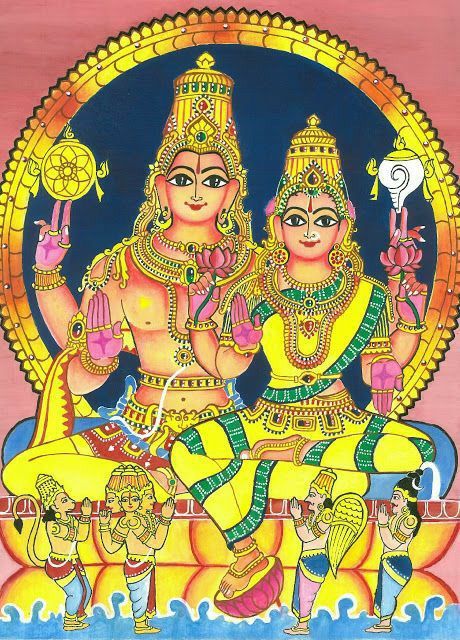
Archaeological Evidences for Vaishnava Dharma in Ancient Times
There are numerous archaeological evidences too, which show the prevalence of the worship of Shri Vishnu, during ancient times. There is an Indus Valley terracotta figure of Shri Vishnu, estimated to about 4,700 years old, by archaeologists! (Refer to this link for more information)
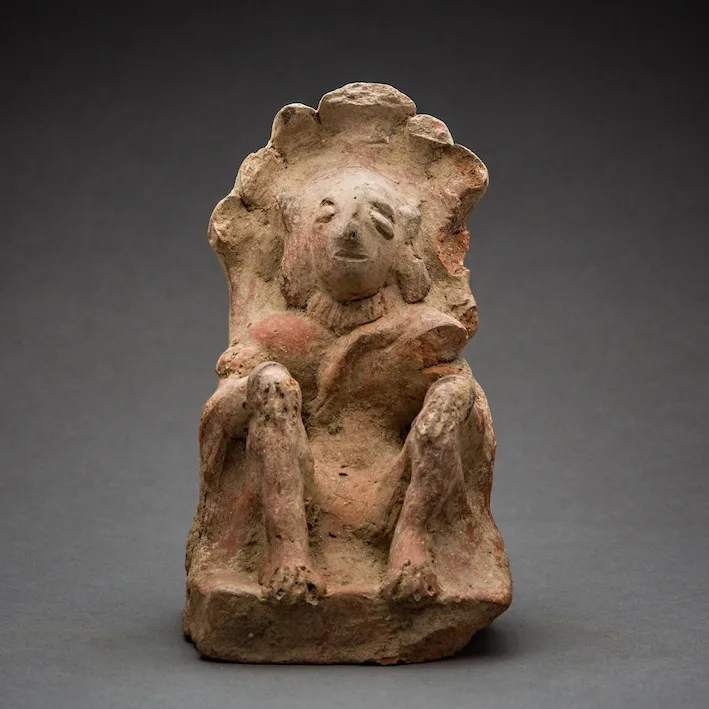
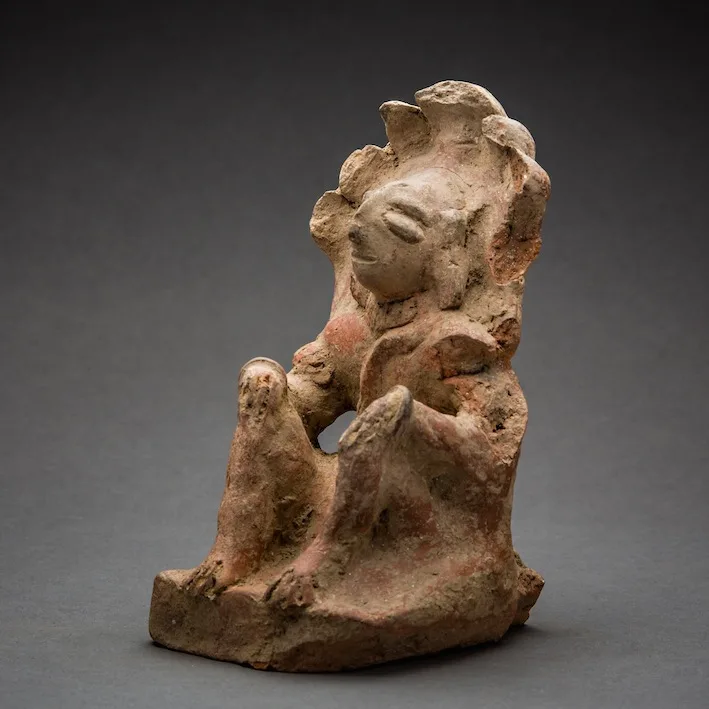
Along with these, there are more explicit evidences mentioning the practice of the Vaishnava philsoophy of Pancharaatra, with artifacts showing symbols such as Vishnu’s Vyuhas. The following sculpture is from the 2nd century AD, depicting Vaasudeva and Sankarshana.
There is an ancient inscription from the 3rd century BC, mentioning the Bhaagavatas, in other words, Pancharaatrikas. The short & incomplete inscription reads:
थे न भा ग व त न न ट के न का रि
The inscription was found in the old mound of the Madan Mohan temple in Mathura. Hindu tradition asserts that this temple was rebuilt many times, with the original temple being built by King Vajra, the grandson of Shri Krshna. This inscription found in a medieval temple, affirms the Hindu tradition.
Another inscription was found in a cave locally known as ‘Chudail Chhajja’, situated in Mod. Shivpuri, Madhya Pradesh. It dates to around 200 BC. The Inscription is related to the Bhaagavata tradition and records the donation of several paintings by devotees named Krshnarakshita (literally meaning “protected by Krshna”) and Bhadaka Shatabhatika, the former being the son of Kaushiki and Svira. It again provides evidence for the nationwide mass-popularity of the Vaishnava traditions.
As of now, the currently oldest reference of the word ‘Vaishnava’ (वैष्णव) is found on the following coin of Traikutaka King Dharasena who ruled parts of Gujrat & Maharashtra. The coin is dated to about 250 AD, i.e., around 1,800 years old. The King and his family are referred to as ‘Parama Vaishnava’ (परम वैष्णव).
There are more such evidences, too. Therefore, there should no doubt that Vaishnava Dharma is extremely ancient and has been prominent since thousands of years. Thus, ends this sketch on the Vaishnava philosophy.
Thank you for reading.
श्री कृष्णार्पणमस्तु ॥
Leave a Reply